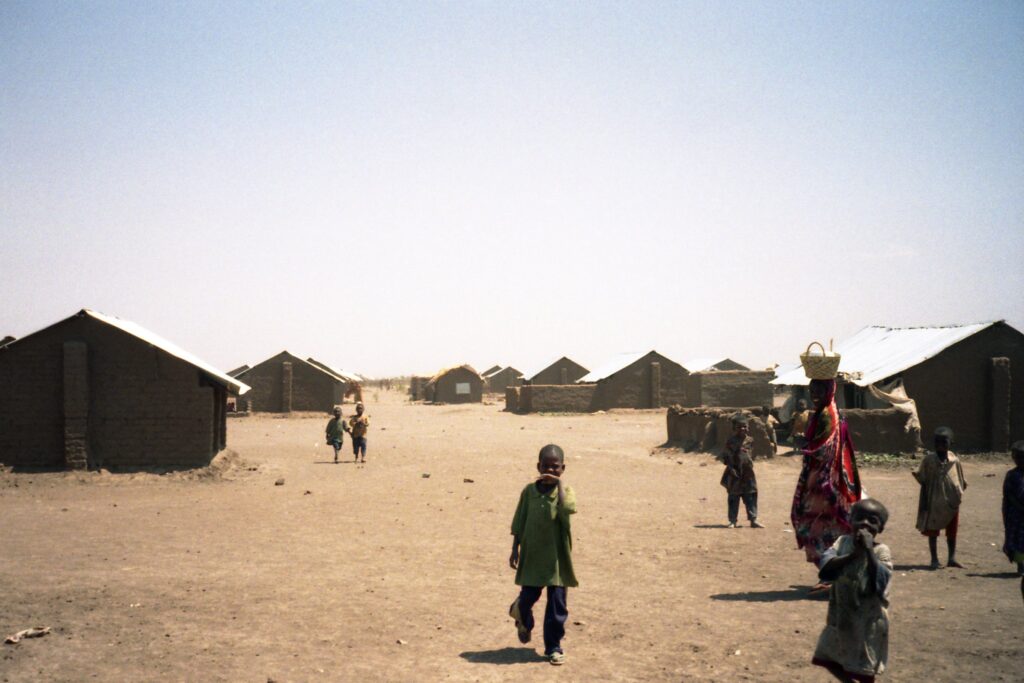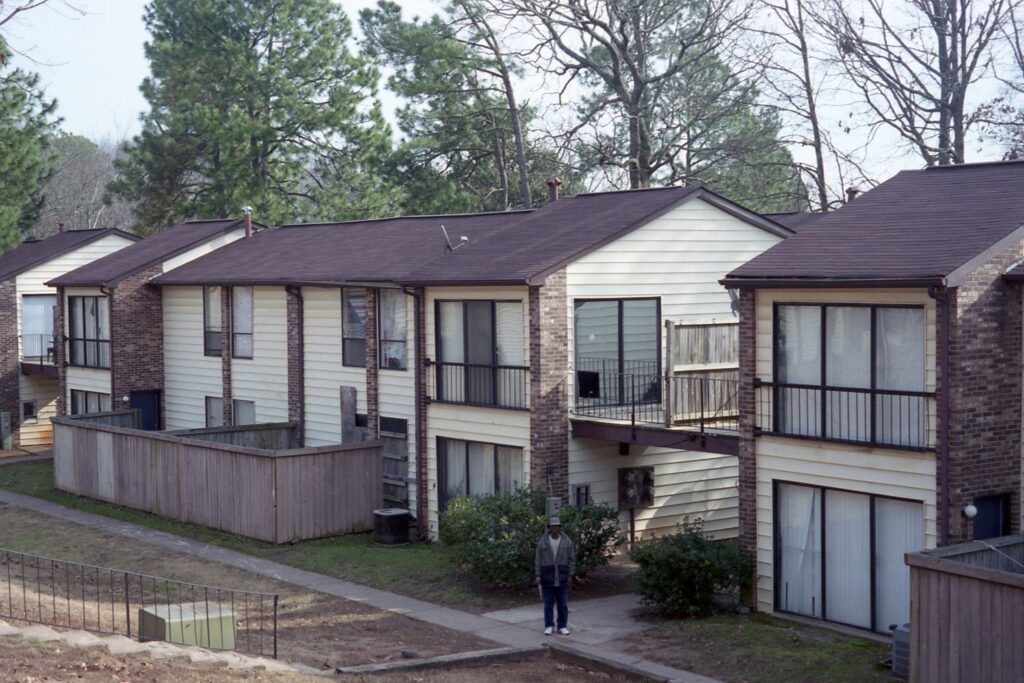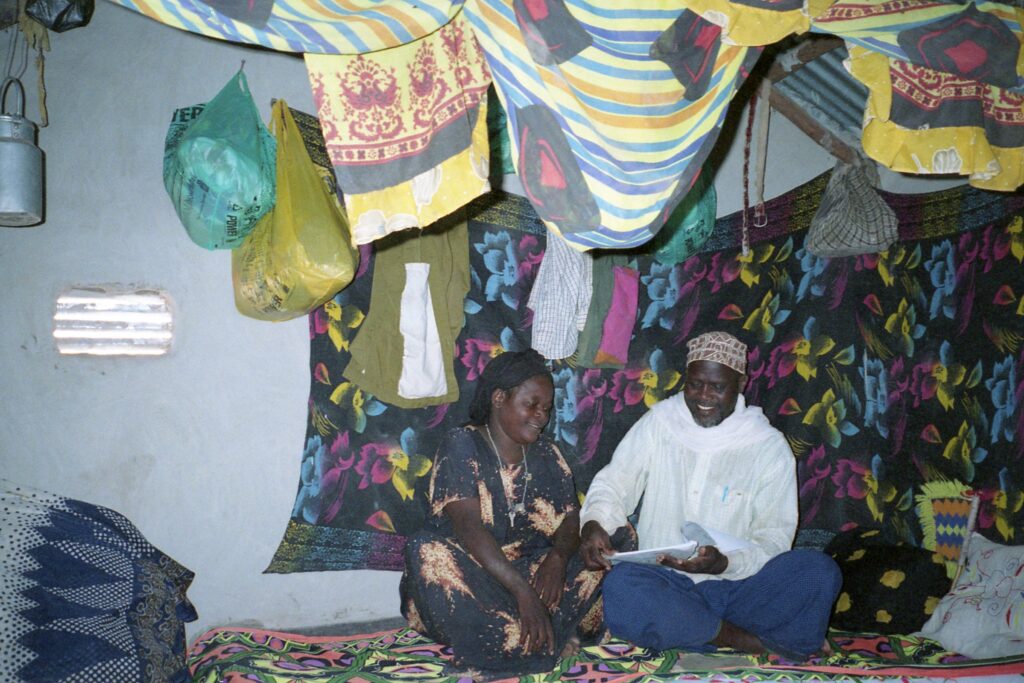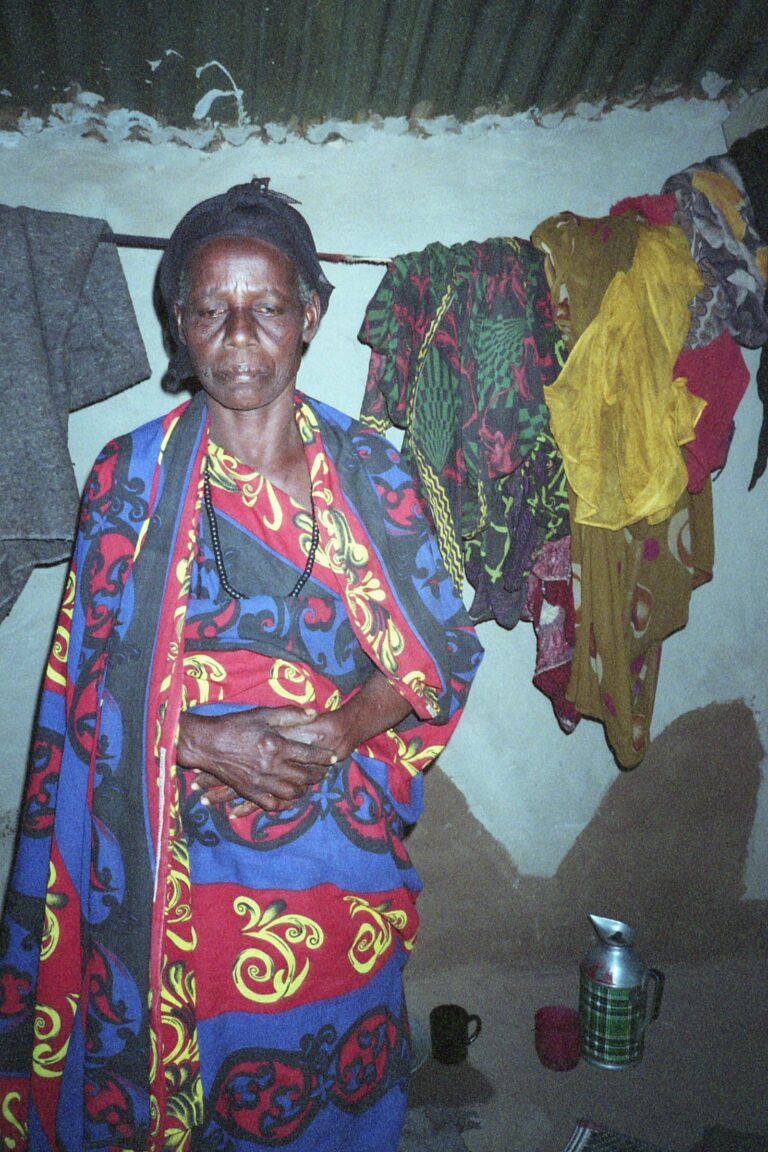Somali Bantu Refugee Resettlement:
From Kakuma to Atlanta
(2003-2005)
Menu
Housing
I would have a hard time imagining the leap from the housing the Somali Bantu were familiar with in the refugee camp and even back in Somalia versus the apartment complexes they would arrive to in Atlanta if I had not seen it for myself.
The incredibly stark Kakuma desert is a bleak setting to live in. The houses of baked clay and tin roofing seen here actually made the most sense given the environment and the need for the refugee organizations to make rows and rows of them quickly to accommodate all the arriving Somali Bantu families.


Refugee agencies are required to find and furnish housing for the families prior to their arrival. This meant we had to make relationships with local multi-unit apartment complexes like these which would allow us to obtain keys in advance with a promise of families signing the lease on arrival.
One benefit of such an arrangement is that multiple families can live in one area and thus keep a bit of their ‘village life’ of relatives and close friends being nearby. That is why it was important for case managers like me to quickly learn how families were connected and which people we should try to place where.
Like all people would, the Somali Bantu did try make their homes in the camps familiar and livable. But you can also see the absence of furniture and the very simple kitchen items. (Cooking was of course done outside over fire.)


